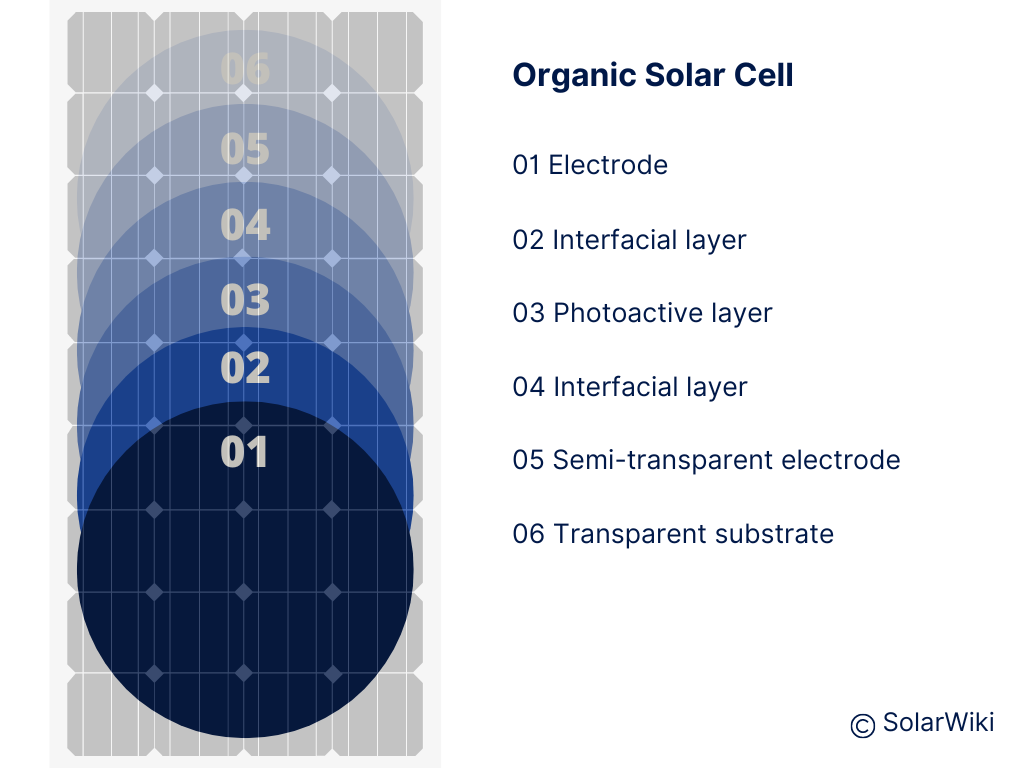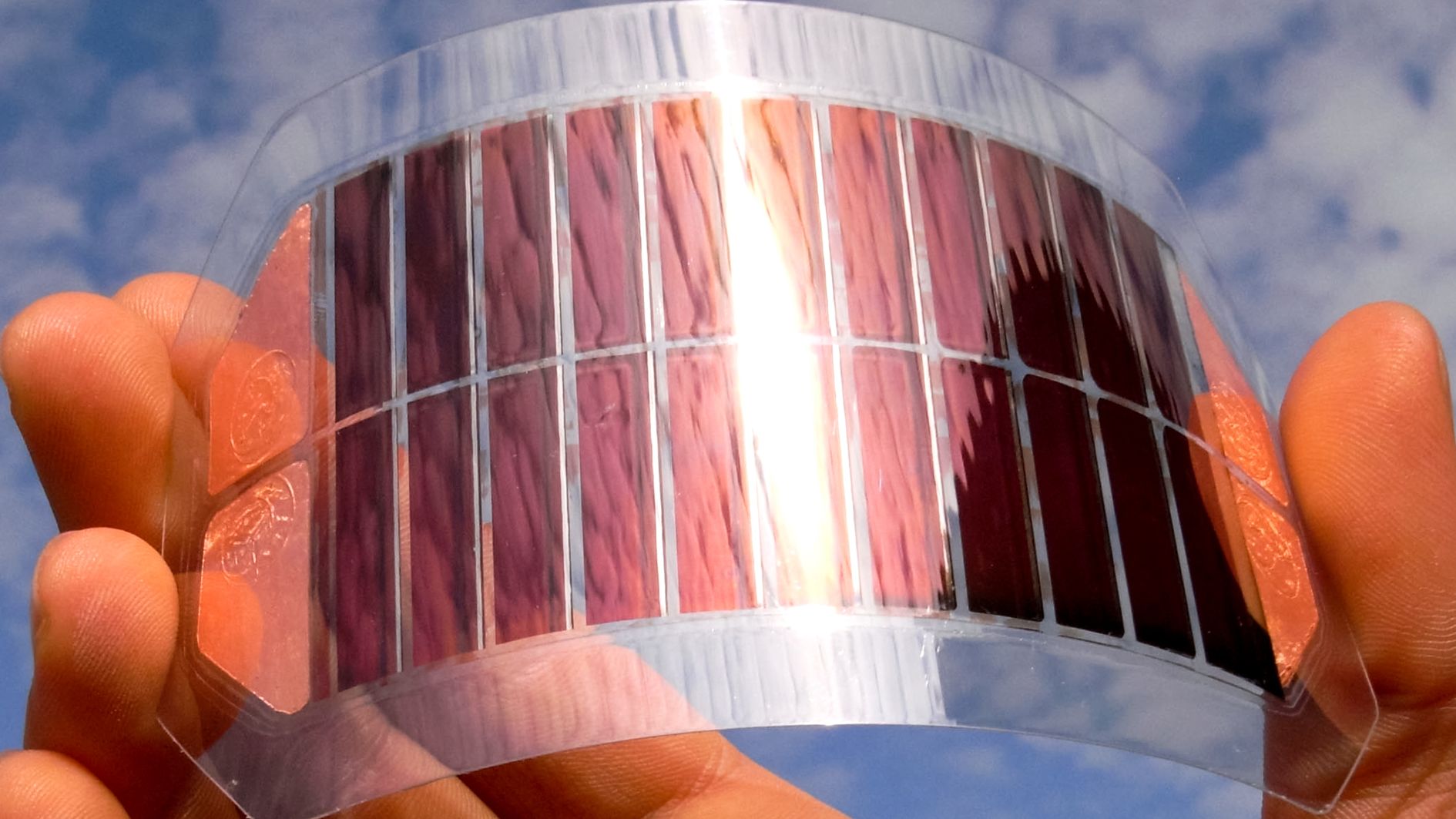Image source: Canva.com
Making Solar Power More Efficient and Accessible: The Promise of Organic Solar Cells
Scientists are relentlessly pushing the boundaries of solar technology, working to enhance its efficiency, broaden its accessibility, and improve its visual appeal. Among the most promising advancements in the field is the development of thin, flexible solar panels, which represent a significant leap forward in the way solar energy is harnessed. These innovations are largely driven by research into organic solar cells, a cutting-edge technology that uses carbon-based materials to create lightweight, adaptable solar panels. Unlike traditional rigid panels, these organic solar cells can be integrated into a wide range of surfaces, from building materials to clothing, opening up new possibilities for seamlessly incorporating solar power into everyday life. This approach not only promises to make solar energy more versatile and widely available but also aims to revolutionize the aesthetics of solar installations, making them more appealing to consumers and easier to integrate into existing structures. As this research progresses, the potential for organic solar cells to transform the solar industry and contribute to a more sustainable future is immense.
Understanding Organic Solar Cells
Traditional solar cells are typically made from silicon. In contrast, organic solar cells use carbon-based materials and organic electronics as the semiconducting material. These are also known as “plastic solar cells” or “polymer solar cells.”
A key difference between silicon and organic photovoltaics (OPVs) is their physical structure. Organic cells are made with compounds dissolved in ink and printed onto thin plastics, making them flexible and suitable for various applications, including solar power windows. While OPVs have yet to match the efficiency levels of silicon-based solar cells, their potential applications and low production costs suggest a promising future once performance is improved.
How Organic Solar Cells Operate
Similar to monocrystalline and polycrystalline silicon solar cells, organic solar cells generate electricity through a process known as the photovoltaic effect. This process begins with the absorption of light: when sunlight strikes the semiconducting material within the cell, it excites the material’s electrons, knocking them loose from their atomic bonds. These freed electrons then begin to flow, creating an electrical current.
This electrical current, once generated, needs to be captured and directed to produce usable energy. The current flows through the solar cell, where it is captured by electrodes and then transferred to wires, allowing it to be used to power devices or stored for later use.
In organic solar cells, the key difference lies in the materials used. Instead of silicon, which is the standard material in traditional solar cells, organic solar cells utilize carbon-based compounds as the semiconducting material. These organic compounds are not only more flexible and lightweight but also offer new possibilities for solar cell applications, such as integration into fabrics, building materials, and other unconventional surfaces. This innovation opens the door to more versatile and aesthetically pleasing solar energy solutions, while still relying on the fundamental principles of the photovoltaic effect to generate electricity.
The Structure of Organic Solar Cells
Organic cells are structurally similar to crystalline silicon solar cells, with the primary difference being the semiconducting layer. Instead of crystalline silicon, organic cells use carbon-based compounds printed in a thin layer onto a plastic backing.

*Data from ResearchGate
Comparing Crystalline and Organic Solar Cells: Efficiency, Materials, and Pricing
Efficiency
Efficiency measures the percentage of sunlight converted to electricity. According to the Department of Energy (DOE), organic solar cells have reached efficiencies of around 11 percent, with some experiments pushing this higher. The most efficient crystalline silicon panels, however, achieve efficiencies above 22 percent. OPVs still have progress to make in this area.
Materials
The major difference between the two types of solar cells is the semiconducting material. Organic cells use carbon-based compounds applied in an ink-based, flexible layer, making them adaptable for unique installations, such as walls or windows.
Pricing
Organic solar cells are not yet commercially available, making price comparisons difficult. However, the cost of traditional silicon-based solar panels has been decreasing, making solar installations more affordable with each technological and production improvement.
Recent Advances in Organic Solar Cells
One challenge for organic solar technology has been its sensitivity to environmental factors like moisture, oxygen, and sunlight. A 2019 study discovered that removing a molecule called Phenyl-C61-butyric acid methyl ester (PCBM) from the top layer of organic cells reduces damage from oxygen and water. Such breakthroughs are crucial for making organic photovoltaics competitive with traditional crystalline technology.
Future of Organic Solar Cells
The future of organic solar cells is filled with exciting possibilities, as ongoing research aims to enhance both their efficiency and durability. Leading institutions like the University of Florida, Princeton University, and the University of Michigan are at the forefront of this effort, making significant strides in pushing the boundaries of what these innovative cells can achieve. Researchers are exploring new materials and fabrication techniques to increase the energy conversion rates of organic solar cells, making them more competitive with traditional silicon-based technologies. Additionally, efforts are being made to extend the lifespan of these cells, ensuring they can maintain their performance over many years of use. As this research progresses, organic solar cells are poised to become a more viable and attractive option for sustainable energy, offering a flexible and cost-effective alternative to conventional solar panels.
Availability of Organic Solar Panels
While organic solar cells are not yet available for commercial solar panel installations, their development promises to expand the possibilities for solar energy generation in the future.
If you’re considering solar energy for your property, many top manufacturers offer high-efficiency silicon-based products. Visit the SolarWiki Installers page to compare options from local installers and find the best solar solution for your needs.
Installers
Discover top-rated solar installers in your area.





